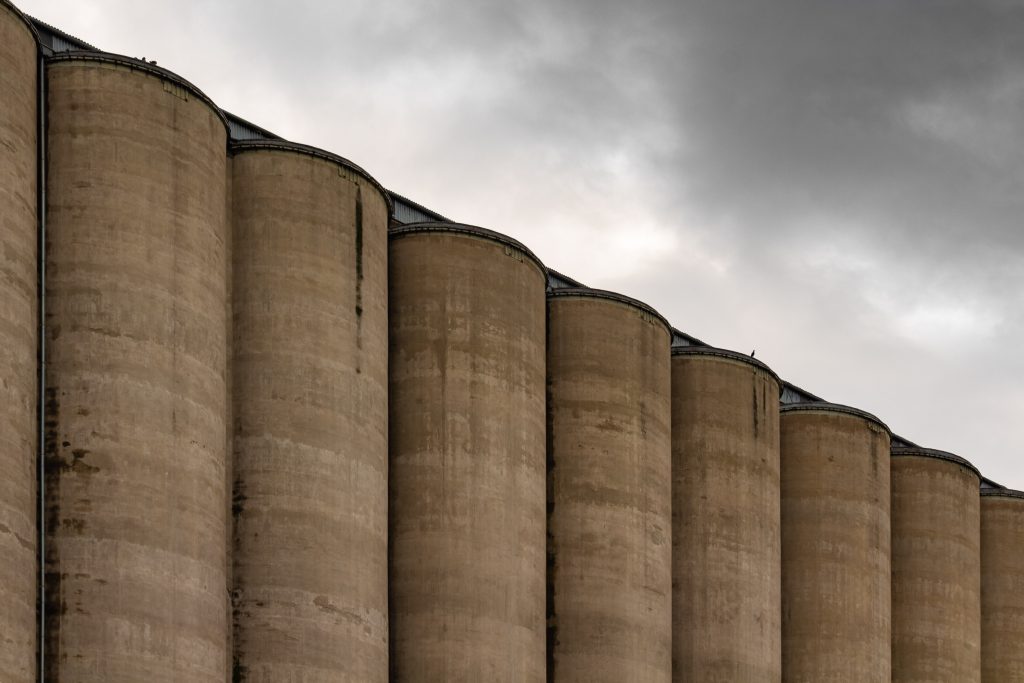Close to our Agiboo office in Almere you can find three red residential buildings. They are like beacons looking over the vast agricultural land in front of them. As they are popular from architectural perspective the buildings get many visitors. Not many are aware that the constructions are based on grain elevators. In fact white grain elevators from France, but the city found red more expressive. They even have a name: “Rode Donders”.
The invention of grain elevators
Grain elevators always brought some magic to the world of grain trade to me, especially the historical ones. They started to appear in the mid 1800’s in the United States. The man most responsible for the invention of the grain elevator is Mr. Joseph Dart. He arrived in Buffalo, New York in 1821. He worked closely with the mechanical engineer Robert Dunbar. Although he was actually a lumber trader together they build the first steam-powered grain elevator. This one is still known today as Dart’s Elevator.
Dart’s Elevator
Dart’s Elevator was equipped with leather vertical conveyor belt with buckets, also known as the “Marine leg”. It changed the entire industry as suddenly loading became a mechanized process instead of manual labor. Allowing to move grains much faster and avoiding congestion of grain ships in the water. It brought prosperity to Buffalo as it became the largest grain port of the world in just 15 years. Unfortunately Dart’s Elevator burnt down in 1862 where after a more modern one was build on the same spot.
Expansion of elevators
The idea of using grain elevators was quickly adopted world wide. After the 1850’s new grain elevators rose along the farmlands in the United States and Canada. People spoke about them as “Prairie Cathedrals”. They changed the landscape and we still have associations with them from Hollywood movies and classic westerns. Most farming villages world wide had eventually a grain elevator. Maybe the most famous grain elevator of the world is the one in Stalingrad, where it was the sight of complete battle during World War II.
Grain trade
The rise of the elevators also had impact on the trade side and the growth of using commodity derivatives.Grain elevator operators buy grain from farmers, either for cash or at a contracted price, and then sell futures contracts for the same quantity of grain. Taking profit through the basis.
Modern elevators
As everything evolved, also the grain elevators. They might be not so romantic anymore as in the 1800’s. They play nevertheless a vital and significant role in the modern era of grains and commodity trade. Multiple types are known nowadays such as country elevators, subterminal elevators and terminal elevators. The latter can hold 20 million bushels (equivalent to 435000 Metric Ton) or more. Modern shiny metal type of buildings creating a complete different landscape.
Managing the elevator administration
The challenges in administration also evolved as the amount of ships and trucks grew significantly. Weight bridge integrations, automatic documents and collection intake are just a few technologies involved. The market risk management and valuation of the grains in the elevator has its specific challenges as well. A commodity trade and risk management (CTRM) solution such as Agiblocks can be helpful to get grip on this. What stays are still some beautiful landmarks which you can find in many places such as the Alberta wooden country grain elevators. Hopefully they are preserved for future generations.

